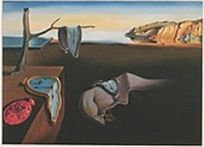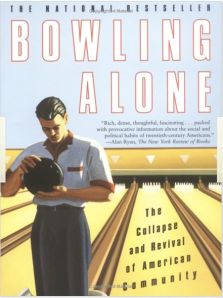May 31, 2009
Rocking Customer Service
 I had a rocking customer service experience yesterday with H20 Audio that reinforces why I am a raving fan for them…
I had a rocking customer service experience yesterday with H20 Audio that reinforces why I am a raving fan for them…
Even though swimming is a second-string pursuit (I’d rather be rock climbing, running, biking, etc.), I swim regularly because it “rehabs” everything I injure in my other athletic pursuits. The downside of swimming is the boredom. So, about six (6) years ago, I started a down and up affair with music while I swim…
I started with waterproof earphones coupled to a waterproof “bag” that held a 1st generation iPod. I stuffed the bag in my swimsuit and swam happily to tunes for a few weeks. Unfortunately, the “bag” sprung a leak and that iPod is now a doorstop (husband was very unhappy).
A year or so later, I found and purchased a SwiMP3. The sound quality of the bone conduction speakers was awesome, but it was terminally painful to update my music because it was iTunes incompatible. As I became more and more iTunes exclusive, it became more and more obsolete.
When I found the iSH2 from H2O Audio, which holds an iPod Shuffle, I was delighted. Unfortunately, those early waterproof earphones had inconsistent performance and I still pined for the sound quality of my SwiMP3, but with the ease of iTunes. I began sending notes (to both companies) asking for sound quality AND iTunes compatibility. I was elated when H20 Audio told me that they were about to come out with the iSH3 (aka Interval) incorporating their Surge headphones to the iPod Shuffle casing. I was so delighted that I ordered two as soon as they were available in Feburary 2009 (one for me and one for my friend’s birthday in May). I was so early in my purchase that I had to work with customer service to register – the warranty website had yet to list the iSH3! That’s how I met Richard at customer service.
I have been rocking my splashes very happily ever since. I love my iSH3 and whenever anyone at the pool asks me about it, I encourage him or her to purchase an iPod Shuffle ($50) and the iSH3 ($80) – great deal! I provide the H2O Audio website info and tell them that they will not regret it.
Imagine how distressed I was when I found out that my friend’s gift had a broken latch! Considering that I had purchased it in February and I desired to make it right when I saw her next weekend, I was glad to have a relationship with Richard. I typed up an email to Richard, explained situation and he made it right! I have a new iSH3 on the way so that I can swap with my friend when I see her next weekend and then I’ll send the broken one back. With this gesture, H2O Audio amplified my raving fandom. ☺ Their customer service exemplifies my three favorite (long view) customer service mantras:
- Build relationships with your users. Get to know each other – exchange full names and try to know something about the other person that allows you to connect. For a customer, nothing is more frustrating than either not knowing whom to call or not having comfort to call when a problem arises. Creating connection encourages honest, timely communication.
- If your customer calls you to complain or seek advice, THANK them, encourage narratives, and listen for information in the details. No matter how hard it is to say “Thank you” to someone who is complaining, be sincere. The provided information is a gift that will help you to make products better – you will learn how the product is actually being used.
- Fix what isn’t right without excuse and be grateful for the opportunity.
This advice applies equally to technology development (internal customers) as to consumer products (external customers).
Are you building relationships with your users? Thanking them? Fixing what isn’t right? Staying grateful for the opportunity?
Are you rocking your splashes with an iSH3?
May 27, 2009
Off-the-Scale Futurist
 I just finished reading, “The Time Paradox: The New Psychology of Time that Will Change Your Life” by Zimardo and Boyd. It hasn’t changed my life, but it definitely gave me insight. Irrespective, it is a worthy read.
I just finished reading, “The Time Paradox: The New Psychology of Time that Will Change Your Life” by Zimardo and Boyd. It hasn’t changed my life, but it definitely gave me insight. Irrespective, it is a worthy read.
Before I began reading, I took the online Zimbardo Time Perspective Inventory (ZTPI) and discovered that I am an off-the-scale futurist scoring a whopping 4.92 in the future perspective. On all other time perspectives, I am at or below average.
The description of the “Future-Oriented Person” closely describes me (dominant in concern about long-term consequences, able to sustain the unpleasant for future benefit, health conscious, goal-oriented…) – how scary is that?! Perhaps that explains WHY I have a blog titled the LONG VIEW!
The basic point of the book is to get Futurists to be more Present and Past/Presents to be more Futurist – we all need balance. Indeed!
The good news for me is that Futurists tend to be very successful in business because they are well equipped to deal with the complexities of the modern world. The bad news is that Futurists tend to have less joy because we undervalue pleasure – work first, then play (if there is time).
The best news is that I didn’t need the book to get me going to achieve balance! Over the past many years, I have been actively working to Be Present much more – to enjoy the process, the road, the flowers along the road, and my traveling companions. The authors reinforce that great leaders are engrossed in the Present.
Some of the most interesting threads in the book revolve around the clash of time perspectives and how differences give rise to conflict. For example, Presents tend to be “in the moment” proceeding with what is interesting to them, viewing punctuality, specificity, and conformance as limitations. Futures on the other hand, value punctuality, specificity, and conformance. Understanding these differences and cultivating balance can lead to less conflict. ☺
Are you working to achieve balance? Is joy on your priority list?
May 26, 2009
Relationship Experiment
 I participate in a Ning Social Networking (NSN) site, called Triiibes. The site is composed of Seth Godin blog and book followers. I find it rewarding to converse with others inspired by Seth, because interesting dialogues develop and they push my thinking. Some of the dialogues revolve around requests for advice or opinion on a specific idea. Sometimes the threads can become tangential, but for the most part they stay topical.
I participate in a Ning Social Networking (NSN) site, called Triiibes. The site is composed of Seth Godin blog and book followers. I find it rewarding to converse with others inspired by Seth, because interesting dialogues develop and they push my thinking. Some of the dialogues revolve around requests for advice or opinion on a specific idea. Sometimes the threads can become tangential, but for the most part they stay topical.
One of the things that I really like about NSN and blogging is that both are asynchronous. I can participate when I have time and contribute much or little. No one is ever late or overstays. Everyone comes and goes at their pace.
Because I am only somewhat active at Triiibes, I have not collected many “friends.” My “friends” are those folks whom I have shared dialogue, experience, or camaraderie – folks with whom I have developed an online relationship.
Last week, a member of Triiibes posted about a specific business idea that led to many responses. Most applauded her idea and encouraged her to proceed. One participant requested clarification on why someone should do business with her. When I read her response, I was dissatisfied because half of her responses were either slightly negative or negative. If she reframed her responses (and thinking) to be much more positive, she would benefit from the Law of Attraction, which follows the long view advice of Create Positivity (Headwinds and Wobble).
I knew as I prepared a well-intentioned response post that, even if I was thoughtful and kind, I was unlikely to receive an acknowledgement because I was offering unsolicited constructive advice to someone with whom I did not have an established relationship. As such, my response post was an experiment. Does one have to first establish a relationship before one can lead (offer advice) in the NSN medium as is required in the face-to-face (F2F) medium?
Predictably, my post went unacknowledged. The author responded to many other posts around my own, but mine was unmistakably invisible (although other participants commented on my suggestions). This reaffirms the long view principle that my horse taught me (Remembering Wyo): Build a relationship before you ask to lead (including the giving of constructive advice).
Although I hope that I personally would welcome all constructive advice (because it is part of long view thinking), I realize my own humanity (and vanity) and am not sure if the situation were reversed that I would have thanked the unsolicited advisor myself. I will continue to strive to achieve what Scott suggests – be open-minded enough that people do not have to “be careful what they say.”
In the meantime, I am glad that I got the “expected outcome” (no acknowledgement) because the unexpected result would have challenged my assumptions and caused me to do additional testing and/or wonder why NSN was different!
May 21, 2009
Durable Connections
 Recently, I received a tip about a professional opportunity from someone that I skied with more than 25 years ago!
Recently, I received a tip about a professional opportunity from someone that I skied with more than 25 years ago!
As Robert Putnam points out in Bowling Alone: “Strong ties with intimate friends may ensure chicken soup when you’re sick, but weak ties with distant acquaintances are more likely to produce leads for a new job.” Thus, it is not surprising that I might receive a job tip from an informal connection, what is surprising is the durability of the informal connection. Clearly, there is long view importance in cultivating positive relationships with acquaintances because they are durable. You never know when, where, or how reciprocal positives will emerge.
Sometimes benefits of unexpected connections will accrue quickly and sometimes they will emerge over a long time scale. When I reflected back to that weight-lifting class in high school that I wrote about in my last blog post (Inspiration from Rachel Alexandra), I realized that I gained much more from that informal connection to Todd than just an “A” in weight lifting.
Todd’s dad owned a trucking company, so Todd was a skilled truck driver at the tender age of 16. Although we had very little in common (except that fateful weight lifting class), I think my intensity and motivation changed him. As we worked together regularly, he decided that he would teach me to drive an 18-wheel rig.
Being game for an adventure, I took him up on the offer to learn. When I started my “lessons,” I could competently drive a manual transmission (I successfully received a driver’s license at age 14 with a final road test in my brother’s 3-speed 1955 Willy’s Jeep). When I finished my “lessons,” I could drive a 15-speed conventional Kenworth and a 16-speed (dual gearbox) cabover Peterbuilt on the grounds without stalling. I had no fantasies of commercial level skill, but I loved the power of commanding a huge diesel engine. That unique experience allowed me to be especially comfortable around BIG equipment, which has been valuable to my professional career.
Although I haven’t seen Todd since high school, should I run into him again, I would absolutely extend whatever kindness I could on his behalf. Who would have guessed so much could come of a high school weight lifting partnership? It is good practice to be open to diversity and to extend kindness to all those that you meet.
Who will you help today?
May 18, 2009
Inspiration from Rachel Alexandra
Rachel Alexandra, a girl horse, won the Preakness Stakes, the 2nd leg of the Triple Crown of Horse Racing this past Saturday! It hasn’t happened in 85 years.
Part of long-view thinking requires identifying, being present, and breathing-in moments of inspiration to launch and sustain transformation. The achievement of Rachel Alexandra is one of those rare inspiring events.
Rachel Alexandra’s accomplishment reminds me of similar inspiration…
I was paying attention (and cheering) when Title IX was passed into law (1972) and when Billie Jean King trounced Bobby Riggs in the tennis “Battle of the Sexes” (1973). At that time, I imagined the transformation of our world to largely what we have now – women participating, competing, and being taken seriously in many, many sports, just like the men.
In 1977, I was the first girl in my high school to be allowed to take weight lifting for P.E. credit instead of the expected volleyball. I recall that the coach agreed to give me an “A” if my cumulative total for the three defined lifts: squat, dead lift, and bench-press, was three times (3x) my body weight at the end of the program. The boys needed a cumulative total that was five times (5x) their weight for an “A.” Although it was probably a fair accommodation considering that boys are stronger than girls, I wanted to be taken seriously. I set my goal at 5x in three lifts.
In class, I was partnered with Todd, the skinny kid who also weighed only about 100 lbs. and who didn’t really care about weight lifting. Although we had different outlooks and viewed each other suspiciously at first, we found common ground. I was grateful for his collaboration to help me achieve 5x. Together we learned excellence in technique and worked hard. At the end of the term, we both achieved 5x and the rest of the class took us seriously. ☺
I am grateful to have been inspired by the birth of equal opportunity athletics and to have participated in nurturing and sustaining the transformation.
Woohoo, Rachel Alexandra, you go girl!
How are you inspired?!
May 8, 2009
Sealing Moment
 One of the best pieces of coaching advice that I received from one of my mentors is “find the teachable moment.” My mentor taught me that we could amplify learning by delivering education just in time. As leaders and mentors, if we pay attention, we can often observe the moment of realization and then amplify the learning by reinforcement.
One of the best pieces of coaching advice that I received from one of my mentors is “find the teachable moment.” My mentor taught me that we could amplify learning by delivering education just in time. As leaders and mentors, if we pay attention, we can often observe the moment of realization and then amplify the learning by reinforcement.
Today, as I participated in “A Celebration of Giving” by my son’s 7th grade class, I realized that there is one better – create a sealing moment. Let me explain…
Over the past many months, the 7th graders embarked on an integrated curriculum project to raise awareness for justice in and repair of the world. Students each selected a charitable organization that was meaningful to them. They learned about their organization through research, interviews, and discussion. Once engaged, they advocated and raised funds for their respective organizations. These 7th graders collectively raised >$29,000 to support 25 different worthy organizations – amazing! Since they raised the money together, they divided the money among their many organizations. They prioritized allocation funding to the different organizations. None received the same amount.
As I listened to the students speak today, I reflected on the comments that my own son made over the final few weeks during the allocation process (“it was hard…”), I realized that the allocation process was in fact the sealing opportunity for them. Although they learned much through the preparation of research papers and demonstrated commitment to their organizations through formal oral presentations, it was not until they had to lobby each other for allocation support that their passion and advocacy truly kicked in. Although it would have been “easier” – less painful, less acrimonious, less divisive – to simply divide the money equally, it would have lessened the learning. Sealing came from the harder process of truly engaging, participating, and negotiating.
Their sense of fairness and justice required each of them to listen objectively to the others and to regard their own project as one among many. They had to decide the minimum level of funding for every project and the maximum funding for the highest priority project. Although their compassion, commitment, and ability to be proactive was excellent before allocations, it was very clear that those attributes increased 10-fold by having to negotiate. They had to both advocate for their own organization and be objective toward the others. Their compassion, commitment, and ability to be proactive were sealed through the negotiation process of allocations.
As leaders, we know that it is imperative to achieve “buy-in” because it creates commitment and loyalty. This point was clearly demonstrated by these 7th graders. Their learning was amplified 10-fold by being part of the decision-making.
As leaders, if we truly desire commitment and loyalty, we must take the long view to ensure that we create sealing moments. We must ensure that the hard work of active participation, engagement, and negotiation is not short-circuited by the need for expediency or ease.
What are you doing to ensure active participation, engagement, and negotiation?
May 1, 2009
Gadget Queen
 There is just something about gadgets that I love. I love the innovation and the potential for transformation that they represent. With each new gadget, I buy into the story that it will somehow improve my life: save me time, make my experience more joyful, or reduce the tediousness of tasks.
There is just something about gadgets that I love. I love the innovation and the potential for transformation that they represent. With each new gadget, I buy into the story that it will somehow improve my life: save me time, make my experience more joyful, or reduce the tediousness of tasks.
Emerging technology represents the same potential for transformation, yet must be nurtured to successful commercialization. Processes need to be developed ensuring that robustness and customer satisfaction are built in.
With the love and devotion that I give my gadgets, it is such a disappointment when a favored gadget fails. Yesterday, one of my favored gadgets, the Max Stealth Tire Minder pressure gauges, failed. My car had a completely flat tire – not a little low, but completely flat! Naturally I assumed that I must have picked up a nail on my last trip. Maybe because I wanted to believe that my Tire Minders were robust, it never occurred to me that they failed (even though it happened once before a few years ago). So, instead of pulling out the compressor, I dutifully pulled out the jack, collected the tire wrench and changed my tire. Although I couldn’t see the failure point on the tire, I took the tire to the shop this morning to get it fixed. My tire dealer assured me that the tire was fine, but my super-hooty-doo tire stem pressure gauge indicator was the culprit. Aargghh, the indignity of it all – I believed in them, loved them, and told all my friends how neat they were – I feel betrayed!
I sold myself the storyline that I saved time while still ensuring that my tires were properly inflated (saves gas!). Each time I filled up, I didn’t have to drag my pressure gauge from the glove compartment to check my tire inflation. All I had to do is just walk around the vehicle and look for the “yellow” indicator to see if a tire was low.
As it turns out, all that accumulated time that I saved not using the regular tire gauge evaporated with the time it took to change that tire, take the tire to the shop, and then wait to have the shop “fix” it. Was it worth it? Well, the fellow at the tire shop told me that he sees lots of failures and fine print indicates that they are warranted for a year. I bought them exactly one year ago, when I purchased my tires – how did they know a year was up?! Even though Tire Minder is neat, it is not robust enough to create my satisfaction over the long view.
There’s always a positive, I think my neighbor got some good laughs watching me change my tire. I was challenged to break free the lug nuts with my short little tire iron that came with my sedan, so there I was jumping up and down on the tire iron (putting all my weight into it) to get them loose. My neighbor took pity on me and brought over his long lever arm tire iron. It worked much better; I think I need one of those! 🙂
That being said, I will continue to try new technology and innovations, because over the long view that is how we achieve progress. This story just provides another reminder of the importance of building robustness and customer satisfaction into innovative products (and emerging technology) to ensure successful adoption (and commercialization).




 This blog chronicles long view thinking in all aspects of life, but with special interest in technology and business.
This blog chronicles long view thinking in all aspects of life, but with special interest in technology and business.